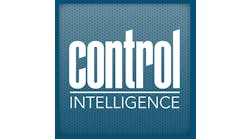This is part I of a two-part series. Read Part II.
The world keeps getting faster. It is not that we are getting older. In fact, it might not be about that at all. Automation marches on, and that means young folks are keen to forge their way in the world in which we have made our careers. Outside of new technology, vendors tend to spend a lot of resources in helping us pick their products out of a lineup and even more resources helping us utilize those products in ways that become easier as time passes.
At my place of work, we are on a push to execute some major equipment upgrades with controls that have been sitting on a shelf for too long. We have a great planning process but have found that it is hard to execute those plans due to the distraction of keeping a production facility in operation. The risk, as we are starting to be concerned with, is the new hardware platform that was adopted at the beginning of the process is starting to get long in the tooth.
For example, we have 14 ribbon blenders of various capacity split between our contract packaging and dairy ingredient divisions. The first of those blenders were installed in 2000, and the next 10 of them stayed with the Rockwell Automation Allen-Bradley SLC 500 programmable controller platform. We added two more ribbon blenders in 2014 and 2023. Using current technology at the time, we upgraded the design from the SLC 500 platform to a CompactLogix 5370 series. We upgraded a smaller blender during that same timeframe but elected to go with a Micro800 series platform as this blender is really just used to make up small sample batches and doesn’t require any special functions.
This is where the risk comes in. When we installed the new blenders in 2014 and 2023, we identified the original 11 blenders as posing a risk, should we have a breakdown. Parts that were hard to get on the surplus market in 2014 had all but dried up by 2017. The COVID epidemic pretty much wiped out any surplus that remained after that. We recognized that it would be good to get our upgrade kits on order and at least have them sitting in our inventory, ready to install when time permitted. Well, time did not permit. We are going to push through in the next five months to get these all executed but now we are faced with having “new” installations that are already on a mature product base. It turns out that the 5370 series has now advanced to the 5380 and 5480 series. Our plan, after the initial 2014 installation, was to buy kits each year to execute two blender controls upgrades. In five years, we would have them all upgraded. Here we are in 2024 trying not to be run over by our own best-laid plans. The hard lesson? Time marches on.
One thing that came up in our recent push on upgrades is that some of the same devices have evolved over that seemingly short span of time, and new features have popped up when we get the devices powered up and online.
We migrated from a PowerFlex 700 to a PowerFlex 753 drive. Key features we were after were the add-on modules for Safe Torque Off and the ENETR module that allows us to pre-assign a private Ethernet I/P address and daisy-chain our network in a device level ring (DLR) configuration.
Our original control systems had safety circuit, but it was really a single-channel master-control-relay (MCR) circuit split over the two main control panels in the system. The blender is 5,000 lb capacity. We dump product into the top of the blender on one floor, and 20 feet down we empty product out of the blender. The various e-stop points were all tied together in a string but with a single channel going to a master control relay for the upstairs processor panel and another single channel going to a master control relay in the downstairs Flex I/O panel. Since we are upgrading the system, it is incumbent on us to bring the safety circuit up to current codes. The e-stops are all dual-channel devices, tied in with dual-channel door switches on the mixer lid and inspection doors and wired to a Guardmaster safety relay with monitored inputs and reset functions. The safety-relay output passes through two force-guided relays that are, in turn, monitored to make sure they turn off when tripped and must be off to allow the safety relay to be reset.





